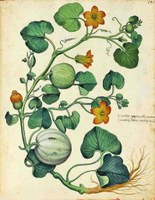In the wake of the work, now underway, of building a multilingual corpus on Bologna and Emilia Romagna within the interuniversity project Lessico Beni Culturali – in addition to the outcome of the Festival of Responsible Tourism IT.A.CA, we expect the following achievements:
- We aim to shed light on the tangible historical heritage of the University of Bologna by gathering and digitalising related evidence, coming from scholars, journalists, travellers, more and less known writers, but also students from the medieval to the contemporary age. We aim to produce both scientific and outreach publications from a linguistic, cultural and translation perspective, describing the university as a site of heritage tourism. The first outcome will be the creation and release of a multilingual digital corpus (hypertextual and multimedia format) of texts belonging to different ages and of various types (travellers’ accounts, letters, reports, news and reportage).
- The collected materials, after careful selection, will be shared with students, foreign colleagues and with the local community during ad hoc meetings that seek to gather contemporary narratives on the university, building up a dialogue between past and present. The ultimate aim is to encourage interaction between the different recipients (citizens, tourists, business travellers, academics and international students) and the university, thus building a new perception of the city (engagement) and stimulating an attitude of commitment and contribution to the conservation of its heritage and legacy.
- Finally, past and present evidence collected inside the corpus through the previous stages, after careful editing, will be used to produce informative and promotional materials, either multimedia or in printed form, which will serve the purpose of touristic promotion of the university’s heritage. We expect these materials to be made available by the Bologna tourist offices, and to become part of the city’s touristic promotion and heritage conservation activities, thus also fostering the engagement of the local community (institutions, tourist guides, cultural associations).
These resources will include: booklets with foreign visitors’ accounts and parallel translations; short brochures with informative materials; printed and digital sightseeing journeys through the university’s places of interest; audio guides; guided tours.
